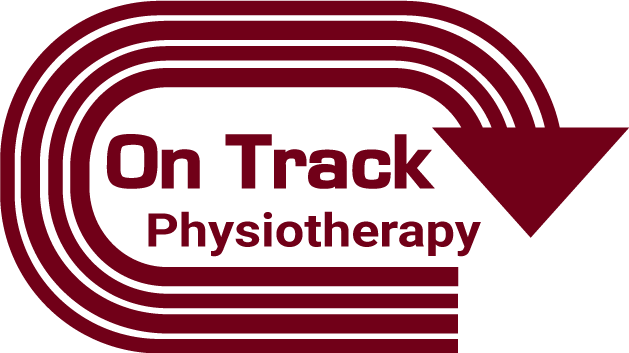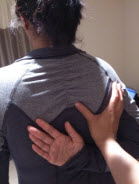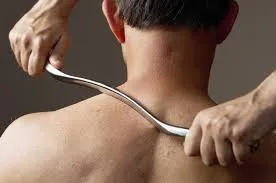In Part I, I discussed why physical therapy of the shoulder using traditional rotator cuff exercises does not always work . Traditional methods of shoulder rehab often train the muscles of the shoulder in a way that they are not really used in normal everyday function. If you haven’t caught that article yet, I suggest you read that one first. In this article I want to address a couple other pieces of the puzzle: motor control and regional interdependence.
There are many cases in which a certain movements may look dysfunctional in a standing position, but may actually be completely functional in other positions where the patient is more unloaded like lying on their back, stomach, side lying, on hands and knees, or even in kneeling. In these positions there are fewer joints and segments to control and in most of these cases less gravity to deal with.
Unless the movement pattern is tested in multiple positions, it is not possible to know with any certainty that the movement is limited because of a true mobility issue (think joint restriction or ‘tight’ muscle) or if it is because of a lack of motor control.
Here is a great example looking at a functional reaching pattern behind the back. In standing, you should be able to reach up behind your back and touch the bottom of the opposite shoulder blade as in the picture
Previously I had a patient come in that could only reach to just below her belt line. She had been given stretches to increase that movement but they really hurt her shoulder to perform. If you’ve ever had a shoulder problem or therapy after a shoulder surgery then this exercise will look very familiar:

When I had her lie down on her left side, she could reach all the way up her back and touch the opposite shoulder blade! So why could she not do it in standing but had no pain and no difficulty lying on her side?
By going to a more unloaded position in side lying, the other joints of the body are taken out of the equation, and there is much less to have to control. In this position she could be successful. This is a great example of poor motor control, not a loss of shoulder range of motion. So of course the first question she asked me is why did she spend the last 4 weeks in therapy and at home trying to stretch out her shoulder?
During the evaluation is was also discovered that she had some loss of mobility in her neck. Because the neck movements were not painful, these were addressed first using some IASTM soft tissue work to her upper trapezius, levator, and rhomboids.
Here is where that term – Regional Interdependence – comes into play. In simple terms, regional interdependence is the interplay between different regions of the body. In this case its easy to see how limitations in the neck can affect the shoulder since there are a number of muscles that run between the spine and shoulder girdle. In other cases it could be dysfunction even further down the spine, the pelvis, hip, and beyond that could affect alignment and function at the shoulder. Without the proper evaluation, it would be nearly impossible to find these relationships.
Once her cervical mobility was restored, we immediately went to corrective exercises to improve motor control of the neck and shoulder girdle. These were fairly simple non-painful exercises that allowed her to successfully work through her neck limitations in a more unloaded position (hands and knees in this case).
Following that first treatment she could reach behind her back and nearly touch her opposite shoulder blade!
When the patient returned for her next visit, she had maintained her neck mobility and behind the back reach without shoulder pain. We progressed to kneeling and standing motor control exercises, and by the end of the treatment she could touch her opposite shoulder blade without difficulty.
Needless to say, this patient was quite happy with the results. Sometimes it is as simple as being in the right place at the right time with your treatment.

About the Author: Dr. Greg Schaible is a physical therapist and strength coach specializing in athletic performance. He attended The University of Findlay as a student athlete. As an athlete he competed in both Indoor and Outdoor Track & Field where he earned honors as a 5x Division II All-American and 6x Division II Academic All-American. In 2013 he completed Graduate School earning his Doctorate of Physical Therapy (DPT). Greg is the owner of On Track Physical Therapy in Ann Arbor, Mi. Follow On Track PT and Performance on Facebook.





